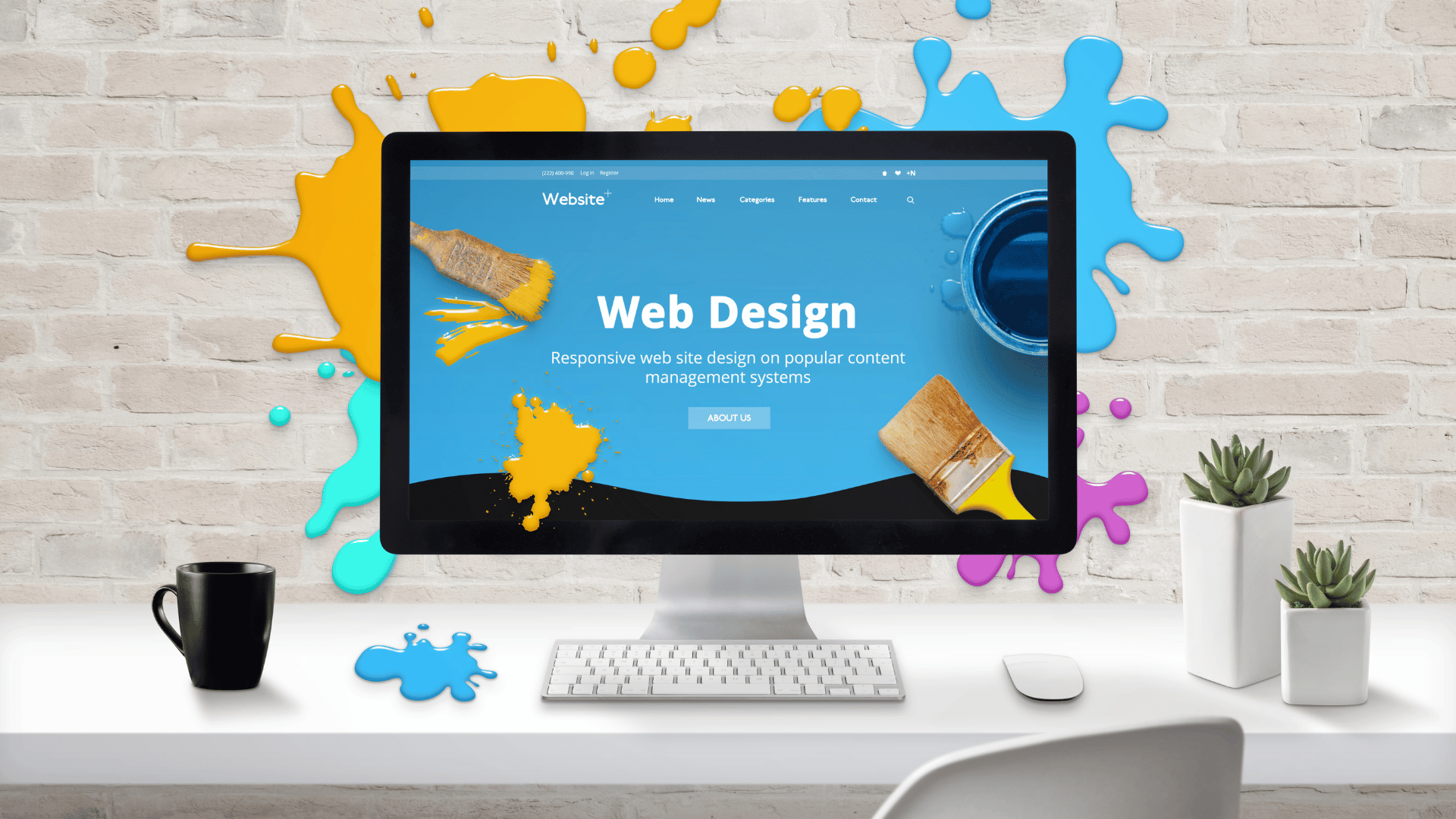The Importance of User Experience in Reliable Web Design Methods
User experience (UX) works as a cornerstone in efficient web design methods. It shapes how customers interact with a site, affecting their contentment and chance of returning. A properly designed UX can boost interaction via user-friendly navigation and receptive layouts. Nevertheless, forgeting these aspects might cause irritation and enhanced bounce rates. Understanding the details of UX is crucial for developers aiming to produce engaging digital experiences that resonate with varied audiences. What factors really drive successful user engagement?
Recognizing User Experience and Its Influence On Style
Although user experience (UX) is usually perceived as a plain aspect of web design, it fundamentally shapes how individuals interact with a website. UX includes all aspects of the user's communication, including use, availability, and total complete satisfaction. A positive UX cultivates interaction, encouraging customers to explore the site and return in the future. On the other hand, an unfavorable experience can result in aggravation, leading to high bounce prices and lost chances for conversion.
Style elements like navigation, design, and content organization play crucial duties fit this experience. Reliable UX layout anticipates user requirements and preferences, making certain that information is visually attractive and easily available. Furthermore, recognizing user habits via analytics can supply important insights, informing layout decisions that improve use. Ultimately, a complete understanding of UX enables designers to produce websites that not just attract users but likewise advertise purposeful interactions that align with company goals and user assumptions.
Key Principles of Efficient User Experience
Reliable user experience rests on numerous crucial principles that boost web site performance and engagement. User-friendly navigating design, receptive design essentials, and the relevance of aesthetic power structure are crucial aspects that add to a smooth interaction between users and web material. Comprehending these concepts allows developers to create more user-friendly and easily accessible electronic atmospheres.
User-friendly Navigation Design
Intuitive navigation design offers as a crucial gateway to their general experience when users encounter an internet site. Reliable navigation enables individuals to effortlessly locate the info they seek, enhancing their interaction with the website. Key principles include clear labeling, sensible organization, and consistent positioning of navigating elements. Tags should be simple, enabling customers to predict the content they will certainly find. A well-structured power structure aids individuals recognize the partnership between different areas, leading them via the website flawlessly. In addition, responsive food selections and easily obtainable links add to a fluid experience throughout devices. By prioritizing intuitive navigating, designers can significantly reduce user frustration and boost interaction, inevitably cultivating a positive assumption of the website and its web content.
Responsive Layout Essentials
A well-structured navigation system normally brings about the demand for a receptive design, which is crucial in today's diverse electronic landscape. A responsive format assurances that websites function flawlessly throughout different tools, including smart devices, tablet computers, and desktops. This adaptability boosts user experience by permitting content to be visually meaningful and easily accessible, no matter of display dimension. Key concepts of receptive design include fluid grids, adaptable images, and media inquiries, which facilitate perfect viewing. Additionally, prioritizing touch-friendly aspects improves communication on mobile devices. By executing a receptive design, designers can suit customers' requirements, decrease bounce rates, and boost interaction. Inevitably, a well-executed responsive style cultivates a positive user experience, urging visitors to check out the web site further.
Aesthetic Pecking Order Importance
Aesthetic hierarchy plays a vital duty in directing customers via an internet site, guaranteeing that important details catches their attention first. By strategically utilizing size, color, spacing, and comparison, developers can create a clear path for customers to comply with. Larger elements usually attract the eye, suggesting their relevance, while contrasting colors can highlight telephone calls to activity. Additionally, constant positioning and collection of associated material enhance understanding, making navigating intuitive. Efficient use of visual pecking order not just improves functionality yet also sustains the general visual of the site, promoting a positive user experience. When users can easily identify one of the most essential info, they are more probable to engage with the material, causing raised satisfaction and interaction with the website.
The Role of Functionality in Web Design
Usability plays an essential function in web design, especially through navigating simplicity and adherence to ease of access requirements. Reliable navigation enhances user complete satisfaction by allowing visitors to find information quickly and intuitively. Meeting ease of access standards guarantees that all customers, no matter of their abilities, can successfully communicate with the web site.
Navigating Simpleness
Simplicity in navigating stands as a foundation of efficient web design, substantially affecting user experience. A structured navigating system enables customers to find info swiftly and with ease, reducing disappointment and enhancing fulfillment. Clear labeling and rational structure are essential elements, leading users easily through the web site. Repetitive web links or excessively complicated menus can disorient individuals, bring about boosted bounce prices. Furthermore, mobile responsiveness needs to be considered, making sure navigation stays straightforward throughout gadgets. Prioritizing vital pages and decreasing mess additionally sustains user engagement. Efficient navigation not just fosters a favorable experience however also urges individuals to discover the website better, inevitably causing greater conversion rates. Hereof, navigation simplicity functions as an important element in the overall effectiveness of web design strategies.
Accessibility Standards
User engagement is considerably improved when websites comply with availability requirements, ensuring that all users, no matter their capabilities, can navigate and interact effectively. Compliance informative post with these requirements not just widens the audience but also improves total user satisfaction. Easily accessible layout includes functions such as text choices for photos, key-board navigation, and sufficient shade comparison, which promote use by individuals with impairments. Additionally, applying these requirements can favorably influence seo (SEO) by improving website structure and clearness. As web design progresses, focusing on look at here now accessibility comes to be crucial in cultivating a comprehensive digital setting. By accepting these requirements, developers contribute to a much more equitable internet, inevitably driving user commitment and engagement.
Value of Responsive Layout for User Engagement
As consumers increasingly gain access to websites via a variety of tools, the significance of receptive layout comes to be vital for involving individuals successfully. Receptive layout warranties that a web site adjusts seamlessly to various display sizes, offering a perfect viewing experience no matter of the gadget made use of. This flexibility improves user involvement by helping with simpler navigating and interaction with material.
When customers encounter a site that is receptive, they are more probable to stay much longer, check out better, and return in the future. A well-designed responsive design lessens the stress usually linked with zooming and scrolling on smaller sized displays, consequently minimizing bounce rates. Furthermore, receptive style can positively impact online search engine positions, as search engines focus on mobile-friendly sites. In today's digital landscape, where mobile usage remains to climb, carrying out responsive design is not simply helpful, yet essential for preserving user engagement and guaranteeing a positive experience throughout all gadgets.
Enhancing Load Times for Better User Complete Satisfaction

To improve lots times, internet designers ought to prioritize enhancing images, leveraging web browser caching, and lessening HTTP requests. In addition, using Content Delivery Networks (CDNs) can expedite content shipment by dispersing it throughout different geographical places. Streamlining code, such as pressing CSS and JavaScript documents, even more adds to much faster filling speeds.
Inevitably, a commitment to improving load times not only enhances user satisfaction but likewise enhances brand commitment and boosts the probability of repeat visits. A swift, smooth experience is important for preserving individuals and fostering favorable interactions.
The Influence of Visual Hierarchy on User Interaction
Aesthetic power structure functions as a vital element in directing user communication on a site. By arranging web content in a method that prioritizes details visually, designers can influence how customers navigate and involve with a website. This pecking order is Visit Website developed with numerous design techniques, consisting of size, comparison, shade, and spacing. Larger font styles or bold shades draw attention to important elements, such as phone calls to action or headings, while suppressed shades and smaller font styles can show secondary details.
Effective visual hierarchy assists customers promptly recognize what is crucial, decreasing cognitive lots and enhancing usability. It permits instinctive navigating, making it less complicated for users to locate what they require without disappointment. As individuals interact with a website, a well-structured aesthetic pecking order fosters an extra rewarding experience, inevitably resulting in greater engagement and conversion rates. Developers have to focus on these principles to create a reliable and user-centered internet atmosphere.
Measuring User Experience: Devices and Techniques

Often Asked Concerns
Exactly How Can I Enhance My Website's User Experience on a Budget?
To improve a web site's user experience on a spending plan, one can enhance web page load rate, simplify navigation, implement responsive layout, enhance material quality, and gather user feedback for continual improvements, guaranteeing an enjoyable visitor experience.
What Prevail User Experience Blunders to Avoid in Web Design?
Usual user experience mistakes in web design include messy designs, bad navigation, sluggish loading times, absence of mobile responsiveness, overlooking accessibility, inconsistent branding, and failing to prioritize user comments - web design company. Each can greatly hinder overall website performance
How Frequently Should I Update My Website for Better User Experience?
Internet sites should be updated routinely, preferably every couple of months, to keep excellent user experience. Frequent updates help address use issues, rejuvenate content, and adapt to changing user requirements, making sure the site continues to be pertinent and interesting.

Can User Experience Effect Search Engine Optimization Rankings on My Site?
User experience can significantly influence search engine optimization rankings, as internet search engine focus on sites that use smooth navigation, fast packing times, and engaging material. A positive user experience can bring about lower bounce prices and higher search exposure.
What Function Does Ease Of Access Play in User Experience Style?
Access plays a necessary function in user experience design by making certain that all people, despite capabilities, can interact and browse with a website properly. This inclusivity improves general contentment and involvement amongst diverse users.
User experience (UX) is typically perceived as a plain facet of internet style, it fundamentally forms exactly how individuals connect with a website. User involvement is significantly improved when sites stick to accessibility requirements, ensuring that all individuals, no matter of their capacities, can browse and engage efficiently. Determining user experience (UX) is necessary for recognizing how efficiently an internet site satisfies the demands of its users. Furthermore, usability screening, where actual individuals navigate the website while observers note problems, uses direct comments on user experience. Typical user experience blunders in web style include messy designs, bad navigating, slow packing times, absence of mobile responsiveness, overlooking access, inconsistent branding, and stopping working to focus on user feedback.